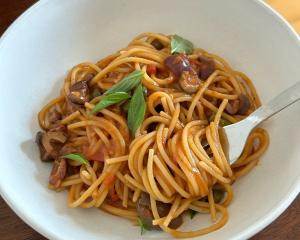Autumn is here: the time of year to turn to tummy-warming higher-alcohol, maltier, hoppier brews with lovely foamy heads. An ice-cold refreshing lager in summer is great, but it comes at the expense of that head which delivers the aromas of the beer.
Beer, like soft drinks or sparkling wine has carbon dioxide in it (whether inserted under pressure or as a natural by-product of the fermentation) which is released better at warmer temperatures.
Unlike fizzy drinks or sparkling wine, beer retains the bubbles as foam because of the proteins, carbohydrates and bittering compounds in it. These coat the bubbles, preventing them from bursting as quickly.
Higher-strength beers produce bigger longer-lasting heads because more malt is used to make the alcohol, producing more compounds in the process. Similarly, extra compounds from hoppier beers contribute to head-retention.
Most mass-produced brands are filtered, taking out most of those bubble-protecting compounds. Conversely, unfiltered bottle-conditioned beers (where the brew is fermented in the bottle) produce larger heads.
The starch from wheat produces more compounds than malted barley, and that is why wheat beers, which are often unfiltered, produce great heads.
Carbon dioxide dissolved in liquid needs a rough surface to form a bubble. Glass might feel smooth, but it has many imperfections in which the bubbles can form. A quick wipe around the inside of a glass with 100grit sandpaper will, for example, produce many more bubbles and a bigger head.
The smoother the surface, the less carbon dioxide will be released from the liquid.
So, oil from lipstick or lips covered with fatty food will coat the glass and reduce foam. Even leftover washing machine detergent on a glass will flatten the head.
Television commercials for Stella Artois and Heineken show bar staff producing a large head and then levelling the top with a stick. The wet stick, known as a skimmer, seals the top of the head to make it last longer.
Money-conscious bar-drinkers might shudder at the size of the head, because they are paying for air (or, in this case carbon dioxide) rather than beer.
But in Europe, where the commercials are made, glasses have a line marked on them which the beer must reach. A 330ml glass, for example, will be 360ml to accommodate the foam.
A Christchurch barmaid this month won a Heineken perfect pour competition - and among the brands tips for a perfect pour are to chill or rinse the glass in cool water to ensure it is clean. The trouble with that is the water covers the minute holes in the glass the CO2 needs to form into bubbles.
The only time a wet glass should be used is to control the excessive head most wheat beers produce.
To achieve the best head, hold the glass at 45deg and aim at midway down the side of the glass, tilting to the vertical when it is half full.
No golds
No New Zealand beer entered in the Australian International Beer Awards won gold last week. The only small southern brewery to enter, Green Man, missed out on medals.
Speight's Summer Lager, Old Dark and Porter scored silvers (Distinction missed out). Monteith's Golden, Radler and Summer Ale won silvers. DB's Export Gold and 33 won bronzes (but Dry missed a medal) and Tui a bronze.
Mac's Gold and Sassy Red won silver and Black a bronze (although Great White, Hop Rocker and Springtide missed). Lion's Summit Lager and Steinlager Classic missed medals.
- Ric Oram












